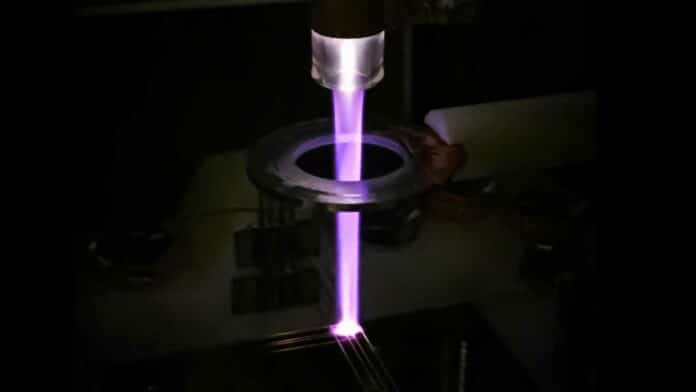Cold atmospheric plasma (CAP) in open air contains many chemical species that undergo thousands of chemical reactions. Understanding its chemical composition is crucial in fields like medicine, where reactive oxygen and nitrogen are significant, as well as in surface modification applications. CAP typically involves a helium-air jet operating on a centimeter scale for several minutes. It produces micrometer-sized streamers and experiences collision frequencies in the hundreds of gigahertz range due to atmospheric pressure.
To address this intricate multi-scale issue, Princeton Plasma Physics Laboratory scientists have developed AI software to enhance medical treatments using jets of electrified plasma gas. This software predicts the chemicals emitted by plasma devices, which are used to treat cancer, promote tissue growth, and sterilize surfaces.
The software learns to predict the mix of chemicals emitted by the plasma jet based on real-world experiments and the laws of physics. This artificial intelligence type, machine learning, allows the system to learn from provided information.
The plasma studied, known as cold atmospheric plasma (CAP), participates in numerous reactions when the CAP jet is activated. The resulting chemicals modify cells in various ways, but the exact mechanisms must be fully understood.
Yevgeny Raitses, a managing principal research physicist at the U.S. Department of Energy’s Princeton Plasma Physics Laboratory (PPPL), said, “This research is a step toward gaining a deeper understanding of how and why CAP jets work and could also one day be used to refine their use.”
The software employs a physics-informed neural network (PINN) approach, which mimics the human brain’s information processing flow and incorporates physics laws.
Sophia Gershman, a lead PPPL research engineer from the PCRF who worked on this collaborative project, said, “Knowing what comes out of the jet is very important. Knowing what comes out accurately is very difficult. The process would require several devices to collect different information about the jet. In practical studies, it is difficult to go and utilize all of the various technologically advanced diagnostics all at once for each device and various types of surfaces we treat.”
The project started with a small dataset obtained using Fourier-transform infrared absorption spectroscopy, which was expanded and used to train the neural network with an evolutionary algorithm.
Ultimately, the software accurately calculated the CAP jet’s chemical concentrations and other parameters based on real-world data. This is crucial as the plasma’s effects depend on its chemical composition.
Michael Keidar, the A. James Clark, Professor of Engineering at GWU and a frequent collaborator with PPPL, who also worked on this project, said, “The long-term goal is to be able to perform these calculations fast enough that the software can automatically adjust the plasma during a procedure to optimize treatment.”
“Ideally, it can be personalized. The way we envision it, you treat the patient, and the response of every patient will be different. So, you can measure the response in real-time and then try to inform, using feedback and machine learning, the right settings in the plasma-producing device.”
Journal Reference:
- Li Lin, Sophia Gershman, Yevgeny Raitses and Michael Keidar. Data-driven prediction of the output composition of an atmospheric pressure plasma jet. Journal of Physics D: Applied Physics. DOI 10.1088/1361-6463/acfcc7
